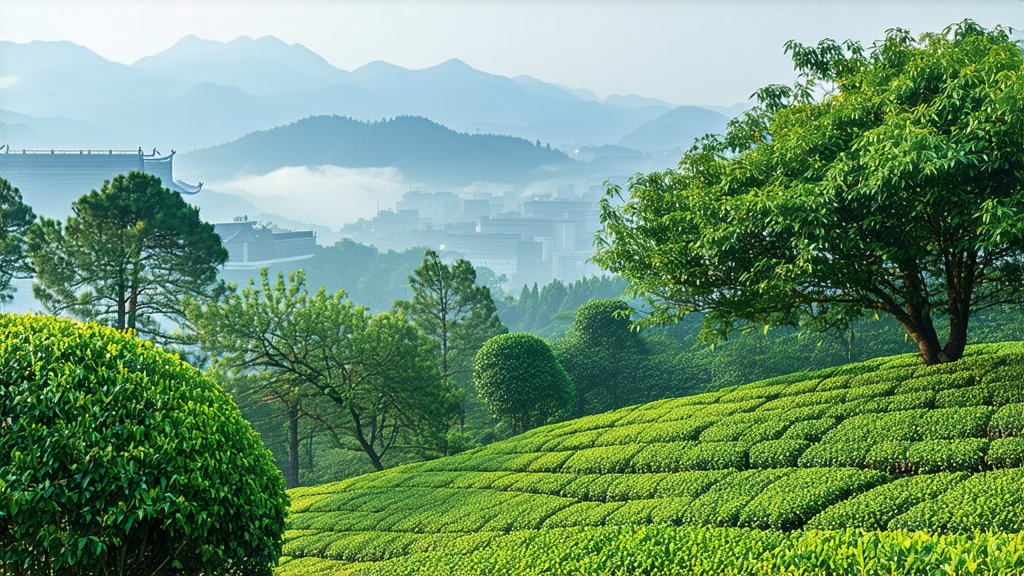
Longjing Tea, often referred to as Dragon Well Tea, is one of the most revered green teas in China, renowned for its unique flavor profile and elegant appearance. This article delves into the rich history, varieties, meticulous production process, and the art of appreciating Longjing Tea, offering an immersive journey into the world of this exquisite beverage.
Historical Background
Longjing Tea has a storied history that dates back over 1,200 years. Its origins can be traced to the Tang Dynasty (618-907 AD), but it gained prominence during the Qing Dynasty (1644-1912). The tea was named after a well located in the village of Longjing (Dragon Spring) near West Lake in Hangzhou, Zhejiang Province. The area’s favorable climate and fertile soil contribute to the superior quality of this tea.
Varieties of Longjing Tea
There are several grades of Longjing Tea, each distinguished by its leaf size, shape, and overall quality. The highest quality grades include:
-
Xi Hu Longjing (West Lake Dragon Well): Grown around the West Lake region, this variety is considered the epitome of Longjing Tea. It features flat, spear-shaped leaves with a bright green color and a smooth, chestnut flavor.
-
Ye Qian Longjing (Pre-Qingming Dragon Well): Harvested before the Qingming Festival, this early spring tea is prized for its tender leaves and vibrant taste. It is often regarded as the freshest and most delicate form of Longjing Tea.
-
Mei Yu Longjing (Rain Before the Summer Solstice): Picked after the Qingming Festival but before the summer solstice, this variety maintains high quality while being slightly more robust in flavor compared to Xi Hu Longjing.
The Art of Longjing Tea Production
The production of Longjing Tea is a meticulous process that involves several key steps:
-
Handpicking: Only the top buds and youngest leaves are handpicked, ensuring the highest quality. This selective harvesting is typically done in early spring when the leaves are at their freshest.
-
Fixing: The freshly picked leaves are quickly pan-fired to halt oxidation. This step preserves the green color and fresh aroma of the tea.
-
Shaping: The leaves are skillfully shaped by hand or machine to achieve the distinctive flat, spear-like appearance. This shaping process is crucial for both aesthetic appeal and even drying.
-
Drying: The shaped leaves are then dried to remove excess moisture, which helps in preserving the tea’s flavor and extending its shelf life.
-
Sorting and Grading: Finally, the tea undergoes rigorous sorting and grading to ensure only the finest leaves make it to the market.
Appreciating Longjing Tea: A Sensory Experience
To truly appreciate Longjing Tea, one must engage all the senses. Here’s how to savor this exceptional tea:
-
Visual Appreciation: Observe the dry leaves for their uniformity and vibrant green color. When brewed, the leaves unfurl gracefully, revealing their delicate structure.
-
Aromatic Exploration: Inhale the subtle, sweet aroma of the brewed tea. High-quality Longjing Tea should have a fresh, grassy scent with hints of floral notes.
-
Tasting: Take a sip and let the tea roll over your palate. Notice the smooth, mellow texture and the balanced flavors—often described as a harmonious blend of sweetness and slight bitterness.
-
Mouthfeel: Pay attention to the tea’s mouthfeel. Longjing Tea is known for its silky smoothness and lingering finish.
-
Repetition: Enjoy multiple infusions of as Longjing Tea can be steeped several times, with each infusion revealing different layers of flavor.
In conclusion, Longjing Tea is not just a beverage; it is a cultural treasure that embodies the essence of Chinese tea artistry. From its ancient roots to its modern-day cultivation, every aspect of Longjing Tea speaks volumes about China’s rich tea heritage. By understanding and appreciating this remarkable tea, one gains deeper insight into the traditions and values that have shaped Chinese culture for centuries.